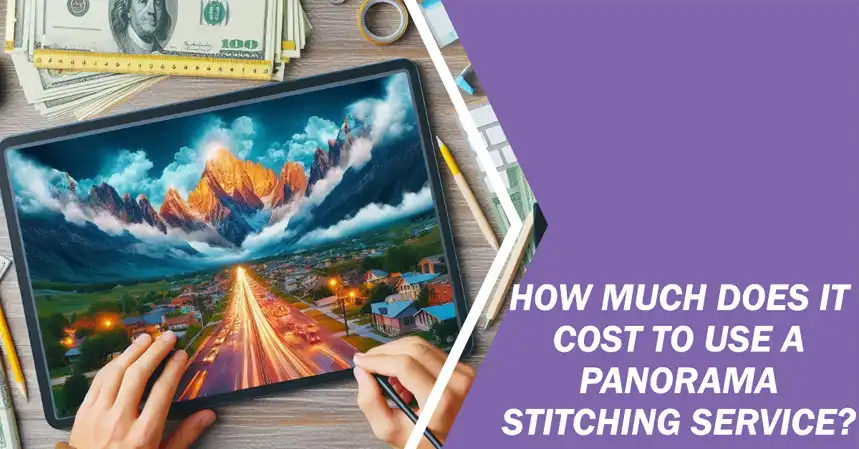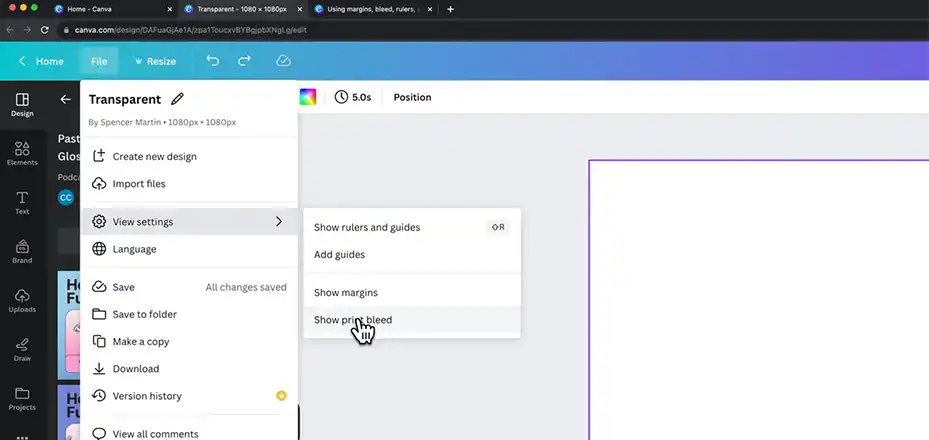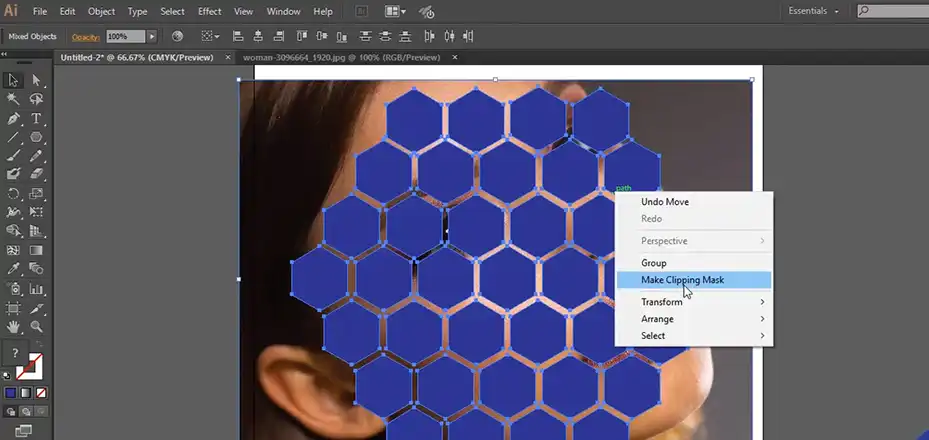Panorama stitching involves combining multiple photos together to create an immersive wide-angle or 360-degree panoramic image. While you can try stitching panoramas yourself using photo editing software, getting it done professionally by a panorama stitching service ensures high-quality results. But how much does using a pro panorama stitching service cost? Let’s discuss the factors that determine the pricing.

What Affects the Pricing of Panorama Stitching Service?
The cost of getting your panoramas stitched by a professional service depends on several key factors:
Number of images
The number of photos that need to be stitched together to create the panorama greatly affects the pricing. A simple 180-degree panorama may involve around 15-30 photos taken in a horizontal or vertical sweep. In contrast, a full 360-degree panorama that captures the entire scene requires a minimum of 50 photos or more, taken in every direction.
The panorama stitching service needs to individually process each image, and align and blend them seamlessly through complex algorithms. This entire process takes more time and effort as the number of photos increases. Most services price their packages based on the number of photos. The more photos that need to be stitched, the higher the overall cost.
Viewing Angel – 180° vs 360°
The viewing angle or coverage of the panorama is a major cost factor. A 180-degree panorama shows only half of the surrounding view in a single direction. This may be sufficient for capturing panoramic landscapes, seascapes, cityscapes, etc. On the other hand, a full 360-degree panorama captures the entire scene around the camera in all directions. This allows the creation of a completely immersive experience for viewers. 360-degree panorama stitching requires taking photos in every direction, at small intervals to ensure adequate overlap.
The stitching process also needs to account for blending images seamlessly across a 360-degree view, which involves more complex warping and distortion correction. So in summary, 360-degree panoramas require stitching a far greater number of photos (at least 50+) and involve more advanced algorithms. Naturally, panorama stitching services charge a premium for creating 360-degree panoramas compared to 180-degree ones.
Complexity of Stitching
The complexity involved in stitching a panorama can significantly impact the cost. Panoramas containing open skies, landscapes, seascapes, or cityscapes with relatively plain backgrounds are easier to stitch. The stitching software can seamlessly align and blend such images automatically with minimal intervention. However, stitching gets exponentially more complex for indoor spaces, street-level views, complex textures, dynamic environments with moving elements, varied lighting conditions, etc.
In such cases, a lot more manual pre-processing is needed before feeding images to the stitching software. Perspective correction, color grading, masking, and cloning may be required to ensure uniformity across images and aid precise alignment. This involves a lot more time, expertise, and effort from the panorama stitching expert. As a result, the pricing is usually higher for more complex panoramas compared to simple outdoor scenic pans.
Desired Output Quality
The desired output resolution and quality parameters also impact panorama stitching costs. Basic panoramas can be delivered at web-ready resolutions sufficient for online use. However, customers sometimes need ultra high-resolution gigapixel panoramas for large format printing or commercial installations. Very large panoramas may need images shot in high megapixel cameras and stitched at the maximum resolution the software allows.
The stitcher may also have to perform extra post-processing like HDR, noise reduction, and sharpening filters to optimize image quality. The number of revisions needed is also factored in. Such extensive processing significantly increases the effort required and hence the cost. In summary, basic low-res panoramas are cheaper, while high-quality gigapixel panoramas printed or commercially licensed cost much more.
Turnaround Time
Most panorama stitching services offer different turnaround time options at various pricing levels. Quick “rush” orders with 24-48 hour fast turnarounds usually have premium fees attached. This is because quick turnarounds limit the service provider’s flexibility in scheduling and resource allocation. Complex panoramas need careful manual processing, so hurried timelines increase their workload and stress significantly.
Services charge extra fees for such quick turnarounds to make up for the inconvenience. For clients with flexible timelines, choosing longer 3-5 day standard delivery turnaround options can help reduce costs. Services try to bundle such orders together to work more efficiently at cheaper rates. So in essence, quick delivery means extra fees while slower deliveries are more budget-friendly.
Service Type
There is a wide range of panorama stitching services available at vastly different price points:
- Professional photography studios that offer panorama stitching as a service alongside their production services are on the premium end of pricing. However, they offer the highest quality results, reliability, rich customization options, and expert human support.
- Freelance photographers and photo editors offer stitching services on a gig basis at affordable rates but results can be variable.
- Online automated SaaS services provide speedy stitching via automated algorithms at budget rates but have limited editing options and a lack of human touch.
- DIY software like PTGui Pro, Kolor Autopano, etc. can be purchased outright and provide sophisticated stitching capabilities at one-time costs ranging from $50 to $500. But they involve a learning curve.
So as you can see, established studios and experienced freelancers charge higher rates given their skills and overheads, while automated or DIY tools are cheaper. Your specific needs, quality expectations, and budget ultimately determine what service type is ideal
Pricing of a Panorama Stitching Service
The pricing for panorama stitching services covers a wide range depending on the exact scope of work, complexity of the project, turnaround time, and options like the service provider chosen.
For extensive and immersive services like creating 360 degree panoramas and virtual tours for real estate properties or indoor spaces, specialized studios with expert stitchers and advanced software charge premium rates. Since 360 degree panoramas showcase the entire surrounding space seamlessly, stitching them involves working with a large number of high-resolution images, meticulously stitching them together, and intensive processing to create lifelike environments. For such 360 degree panorama creation and real estate virtual tour services, the pricing typically starts from around $5.25 per panorama based on industry rate cards. Of course, costs can go up significantly for adding customizations and enhancing details.
For routine panorama editing services, freelancers and online platforms offer very competitive rates. This includes basic post-processing tasks like color correction, cropping, simple blending, etc. For such basic panoramic image editing, prices start from as low as $3.5 per image. If editing requires fixing complex misalignments, handling moving objects, and extensive blending to create seamless transitions, the rates understandably go higher starting from $5 per panorama image. For specialized HDR editing to enhance dynamic range, bring out details, and create visually striking panoramas, pricing starts from $5.25 given the expertise involved.
Freelancers also list their rates per hour for stitching and editing panoramas based on complexity. Here pricing ranges from $10 to $90 per hour, with higher rates for challenging projects requiring focus stacking, motion blur fixing, detailed masking and compositing work, etc. This hourly rate model is preferred by many clients as it provides transparency and flexibility.
Bonus Tips – Do Panorama Stitching Yourself
Want to save on outsourcing costs by stitching panoramas yourself? With some effort and learning, you can create stunning panoramas at home using photo editing software like Photoshop.
- Import your panorama photos into Lightroom and apply basic edits like color correction and white balance adjustments. Make sure to sync the settings across all images so they have a uniform look and exposure. This aids in seamless blending later.
- Open the synchronized photos in Photoshop. Go to File > Automate > Photomerge to trigger the panorama stitching dialog box.
- In the dialog, select the Auto Layout option to let Photoshop automatically determine the optimal stitching algorithm. For unique pans, also try Cylindrical and Perspective layouts and compare the results.
- Select your photos and click OK to initiate stitching. Depending on the number of high-res images, this can take a while so be patient.
- Once stitched, the panorama will open with each photo placed on separate layers with blank edges. Carefully crop the canvas to remove the empty areas and frame your panorama.
- Flatten the multiple layers into a single panorama image. Finally, adjust color balance, contrasts, shadows, and highlights to perfect your panoramic shot.
Following these steps carefully while shooting and stitching will help you blend photos seamlessly into incredible panoramas with Photoshop. Feel free to tweak settings and try different layouts for best results.
Wrapping Up
While stitching expansive panoramas myself is rewarding, the convenience of outsourcing to specialized services can be worth the cost. By evaluating my specific needs and priorities, I can choose a provider that best balances my budget, quality expectations, and project timelines. Either way, experimenting with panoramas allows me to immerse viewers in landscapes in novel, engaging ways.

